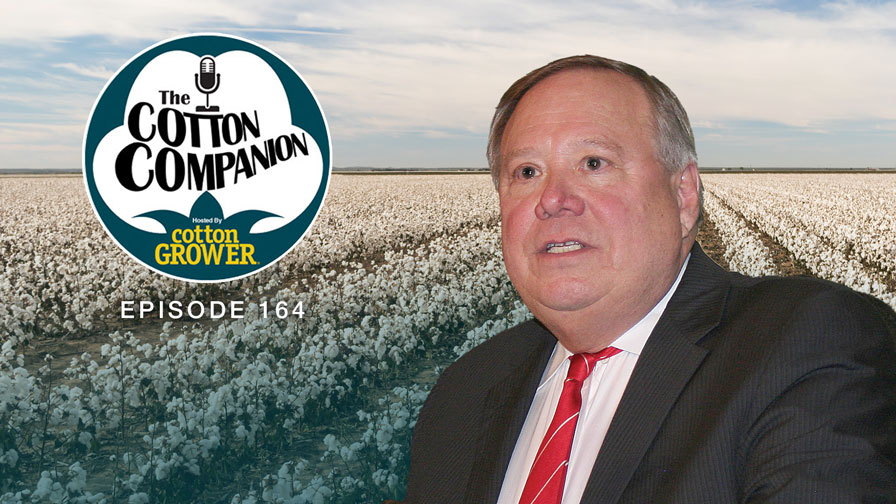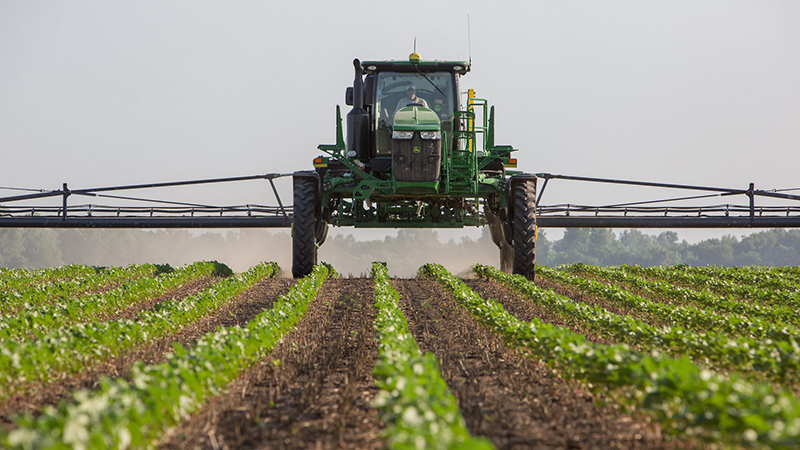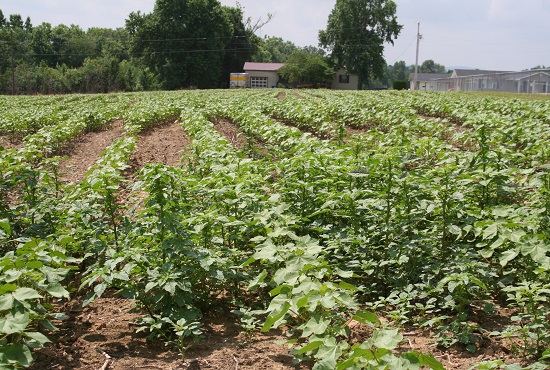Innovative Farm Converts Sustainability into Profitability

When it comes to improving the sustainability of the cotton industry, help is welcome from any source. Fortunately, there are some innovative examples from other agricultural sectors that can help cotton make similar gains.
One of those examples comes from the Linde II farm in Mato Grosso, Brazil. Adilton Domingos Sachetti is one of the cotton industry’s pioneers in Mato Grosso, which is the country’s top cotton-producing state (and would be the world’s eighth-largest producer if it were its own country). He began cotton farming more than 20 years ago and helped pave the way for today’s growers.
Today, the Linde II farm produces eucalyptus, corn, soybeans, cotton, as well as pigs and cattle. The family is not only a modern standard-bearer for sustainable farming, it’s a long-term veteran of the practice, having begun to implement eco-friendly practices long before they entered the mainstream mindset.
Their initial foray into sustainable production began more than 20 years ago with the installation of a water turbine. A river runs through the family’s property and they decided to harness that power to generate 150 kilowatts (kw) of electricity that could be used to power various operations on the farm. It was, according to Eduardo Linde Sachetti, son of Adilton, the proverbial low-hanging fruit, as far as sustainability goes.
The success and benefits of the water turbine project got the family thinking about other ways to use the farm’s existing resources to lessen the environmental impact and increase profitability. They focused on revenue-generating ideas they could implement during the off-season and decided to focus on the waste generated by the pig farm. In 2004, the family began to convert pig waste into energy. The reduction in greenhouse gas emissions were sold, in the form of carbon credits, to other companies.
In 2011, the company that was buying the credits went out of business, and rather than find another buyer for the credits, the family decided to convert the system into one that generated even more electricity for the farm’s use.
There’s No Such Thing as ‘Waste’
At first glance, the system appears to be very complicated – and of course, to some degree, it is. The technology is state-of-the-art and the exact process the family uses remains a closely guarded secret. But in theory, it’s quite simple.
“Basically, the waste from the pig farm is funneled into two huge balloons called biodigesters, and that’s where the magic happens,” Eduardo says. “The waste contains bacteria that break down the solid material and convert it into methane gas. It’s very flammable and contains a lot of corrosive elements, including sulfur and carbon dioxide. Once those corrosive substances are removed, the gas can be used to power anything, including a car engine.”
Even the substances that are removed have value, however. Carbon dioxide is used in many common products, including soft drinks, and it could be stored and later sold for profit as well (although the Sachetti family simply releases it back into the atmosphere because the amount produced in this process isn’t significant enough to store and sell).
After the biodigesters convert the solid waste into gas, the resulting liquid is high in sulfur, and thus is a very good fertilizer. It is spread throughout the pastures where the farm’s cattle graze and is so effective that it dramatically increases the number of cattle that can be fed in a given area.
In Brazil, a typical farm must set aside about one hectare per head of cattle, but the efficiency of the Sachettis’ system allows them to raise as many as a dozen cows in the same amount of space (the average for the farm is 6-7 cows per hectare). They achieve this by dividing up their grazing area in to a dozen smaller lots, and the cattle stay in each for one month.
The fertilizer is also used to grow eucalyptus trees, which eventually produce very valuable lumber.
“To complete the circle, we use some of the soybeans and corn we produce to feed the pigs,” Eduardo says. “We grow the corn and soybeans, which we use to feed the pigs, and we use the waste they generate to make electricity. The byproducts of that process create a rich fertilizer, which we then use to produce lumber and beef.”
Translating Sustainability into Profitability
In addition to benefiting the planet by reducing their environmental footprints, many sustainability projects are simply wise, profitable investments from a business perspective. The idea for the water turbine was reached collectively at a meeting of the entire family (six bothers, three sisters and two grandparents), and they began that project in 1992, when Brazil was going through a minor energy crisis and the cost was energy was very high.
“We were having some other equipment installed on the farm that year – including an irrigation system, a grain dryer at the warehouse, and an animal food factory – so we decided to have a water turbine installed as well,” Eduardo says. “Our operating expenses were increasing due to rising costs at the local energy company, so we decided to make a long-term investment by generating some of our own electricity.”
By 2001, the investment had paid for itself and continues to save the farm money today. Combined, the water turbine and two biogas engines produce 650 kw of energy. That’s enough to power the entire farm’s operations on a typical day, and sometimes there is even energy left over. The excess is actually sold back to the electric company, further increasing the positive impact on the farm’s bottom line.
“To be perfectly honest, when my family began implementing these kinds of ideas, they never imagined how much of an impact they would have on the sustainability of farming,” Eduardo says. “Today, everyone knows how important it is to take steps to preserve the environment, so we continue to explore new technologies that will allow us to produce more energy while simultaneously reducing the farm’s footprint. And today, the markets are often willing to pay a bit more when they know the farm is improving its sustainability, so it became not just a good decision from a sustainability perspective, but from a business perspective as well.”








